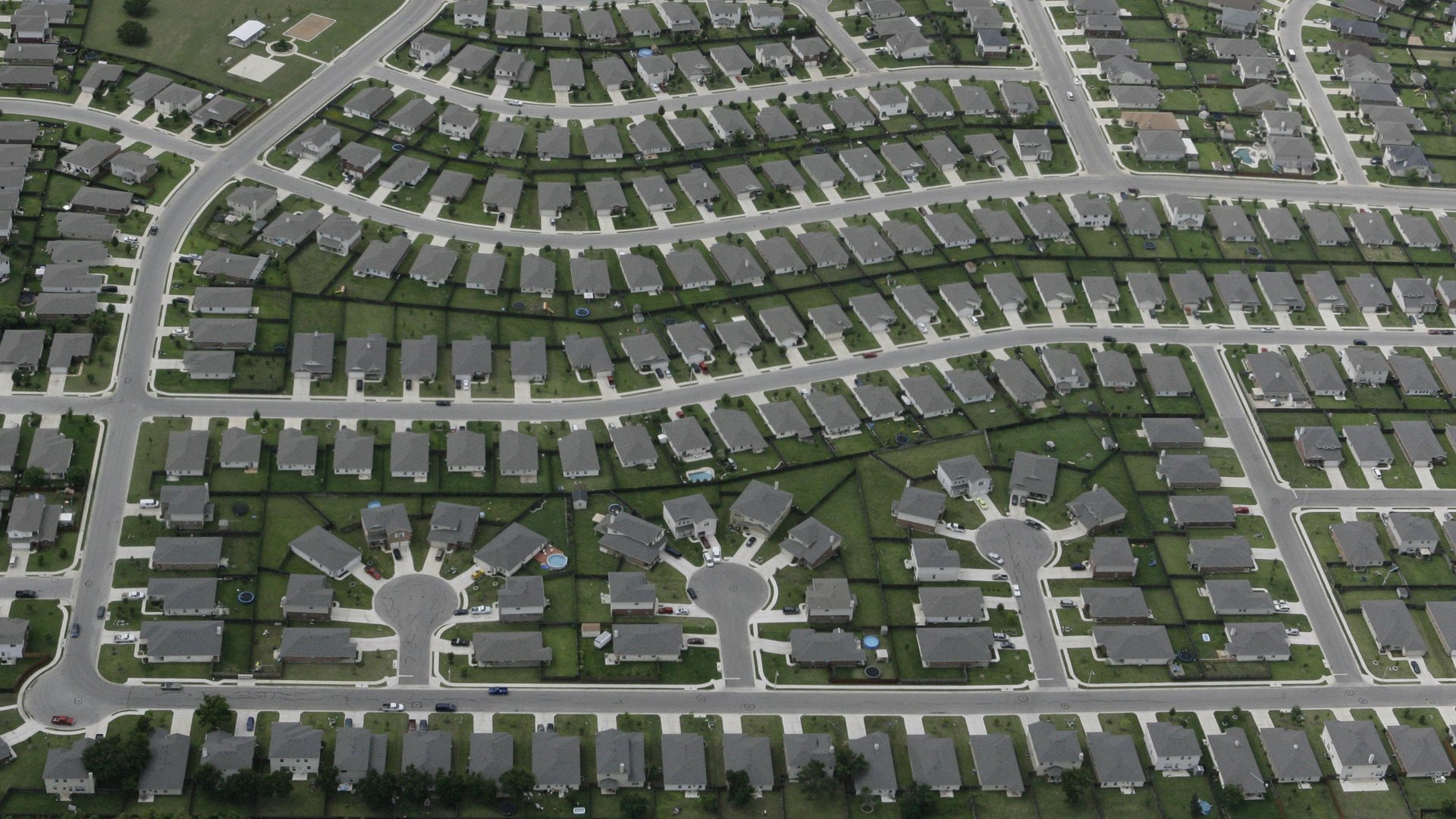Four reasons you can’t give up on America’s exurbs (and it’s not just cheap gas)
Many an obituary has been written for the exurbs, that web of lawn and pavement that circles the outermost ring of most American cities. In the exurbs, people are connected by roads and little else, at odds with the new urbanism. Grabbing coffee or the dry cleaning usually requires a car. Commutes are like a second job.


Many an obituary has been written for the exurbs, that web of lawn and pavement that circles the outermost ring of most American cities. In the exurbs, people are connected by roads and little else, at odds with the new urbanism. Grabbing coffee or the dry cleaning usually requires a car. Commutes are like a second job.
Yet the siren of the white picket fence still calls. As always, the allure has everything to do with money, as in how much Americans make and how much they can afford on a house. Here’s why it’s too soon to give up on America’s outer ‘burbs:
1. Urban inflation
Rising home prices and sluggish income growth have would-be buyers looking beyond hip downtowns and past transit hubs to the bedroom communities that once might have drawn their parents or grandparents. Affordability for new homeowners hit a post-recession low last year, according to the National Association of Realtors. That’s why demand is starting to tick up in places like Corona, a suburb of the suburbs of Los Angeles, where you can get square footage, a yard and shopping for about $390,000. Corona has seen 30% price gains in the past five years. In the same period the median price in the big city has soared 111%, to $586,500.
2. Aw, our millennials are growing up
Young adults want the same things they’ve always wanted, they’re just not in a big hurry. Take marriage. The median age of newlyweds has been rising since the 1950s and is now above 28 for men. As more millennials approach 30 they’ll start settling down, and when they do they’ll want their own place. After being sidetracked for years by the recession and student debt, value will be uppermost in their minds.
3. Cheap gas
We have to say it. On Jan. 29, the price of crude oil fell below $44 a barrel for the first time in almost five years and supplies are at their highest since 1982, a signal that pump prices will stay low for now.
Hybrids and telework also have lessened commuting premiums. Don’t forget, it was the 1973 Arab oil embargo kicked off the exurban decline in the 1970s. Then came shifting cultural attitudes, climate change anxiety, downtown renewal, and the housing collapse. But expensive gas started it all.
4. Picket fences and the BBQ pit
Three-fourths of young adults still aspire to a traditional, single-family house. Most of them—66%—want to be in the suburbs, according to a National Association of Homebuilders survey of recent buyers and house-hunters. Only 10% want to purchase downtown and nearly half say no to high-density living. The survey didn’t mention white picket fences, but most respondents did want an outdoor kitchen.
Don’t we all. But don’t we all want walkability, convenient fun and easy transportation, too? The ideal of homeownership comes with a lot of psychological and cultural hang ups. Usually, though, we’re forced to work past all that to the bottom line – what we can afford. The original bedroom community of Levittown, New York, with its leafy, loopy cul-de-sacs more than 30 miles outside Manhattan, looked idyllic. But more important, it was cheap. With little or no money down and a tiny mortgage, families flocked to its mass-produced ranches and Cape Cods.
Is sprawl bad? Maybe. But smart growth, new urbanism, containment—whatever you label it—also fails when it fights sprawl at the expense of people who want to put down roots and build wealth. The exurbs aren’t ready for the potter’s field just yet.